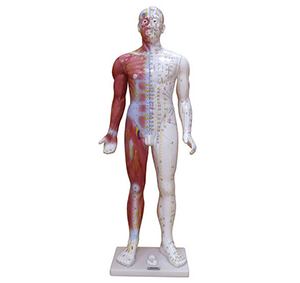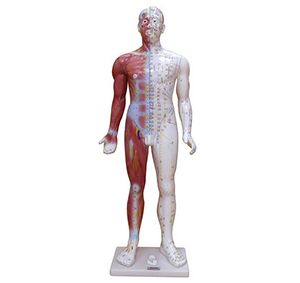As an important auxiliary tool in TCM teaching and learning, the core value of the fourteen meridian point model is to effectively build a bridge between TCM theory and practice, make abstract TCM theory concrete, and make complex knowledge of meridian and acupoint easy to understand and master.
First of all, the design of the model not only allows learners to intuitively see the direction of the meridians and the distribution of acupuncture points, but also to feel the shape and position of different acupuncture points through touch, so as to deepen the understanding of the structure of the human meridians. This intuitive teaching method greatly reduces the difficulty of learning, making TCM theory no longer an obscure concept, but an entity that can be touched and perceived.

Secondly, it provides strong support for the practice teaching of TCM. In the study of traditional Chinese medicine skills such as acupuncture and massage, accurate location of acupoints is very important. Through repeated acupoint positioning and acupuncture exercises on the model, learners can gradually master the correct operation skills, form muscle memory, and improve the accuracy and safety in actual operation. This combination of theory and practice can help learners to transform the theoretical knowledge of traditional Chinese medicine into practical skills and lay a solid foundation for future clinical practice.
In addition, it also promotes the internalization and absorption of TCM theoretical knowledge. In the learning process, learners can deepen their understanding and knowledge of TCM theory by observing, touching and operating models. This process of changing from perceptual knowledge to rational knowledge helps learners to form a systematic knowledge system of TCM and improve their ability to comprehensively apply TCM theory to solve practical problems.
To sum up, the fourteen meridian point model effectively builds a bridge between TCM theory and practice through its intuitiveness, practicability and promoting the internalization of theory. It not only helps learners to better understand and master the theoretical knowledge of TCM, but also improves their practical operation ability, making important contributions to the training of TCM talents and the development of TCM cause

